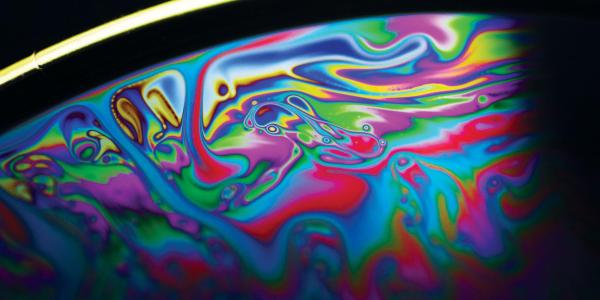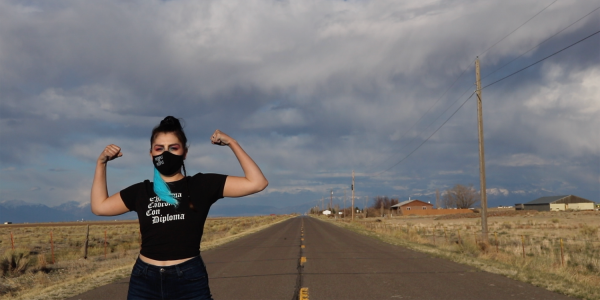 Artist Hannah Purvis (MFA’25) began using artificial intelligence (AI) programs in her paintings and drawings only last fall. Now, she uses them regularly.
Artist Hannah Purvis (MFA’25) began using artificial intelligence (AI) programs in her paintings and drawings only last fall. Now, she uses them regularly.
She may upload a rough sketch into a deep learning model like Stable Diffusion to prompt the program to create similar imagery which she’ll then paint by hand, re-upload and create animation frames for interactivity. Other times, she’ll ask AI to purposefully manipulate one of her prints so she can respond to the new image by painting over it.
“This back-and-forth process explores interactive art and uses physical and digital space simultaneously,” said Purvis, who came to CU from Houston, Texas. “In a way, I’m trying to be a computer, and the computer is trying to be a painter.”
Art students at CU Boulder are experiencing a new era firsthand.
“As with the general public, the student population’s response to AI is mixed: Some think of it as just another tool to be used in the creation of new works of art and creative writing,” said CU art and art history professor Mark Amerika, who has worked with AI for four years and integrates it into his teaching. “Others are suspicious of the way AI has appropriated the work of others and prefer to imagine that the only real way to be an artist is to create something supposedly original.”
Amerika — who has his AI-influenced art published in two solo exhibitions this year in Barcelona, Spain and Porto, Portugal — plans to integrate more AI art techniques into the classroom and his creative practice. Students are following suit.

Since 2018, Ryze Xu (MFA’24) has been experimenting with the ways public AI programs use language to produce an output. Then he started using these programs in his art.
As a ceramicist, who turned to clay after eschewing a career path as a fashion designer, he likens his process with AI to using the kiln.
“I view AI as a form of machinery, a tool that, at its core, operates on basic principles akin to all kinds of our daily technology,” said Xu. “The kiln is where we input clay and heat and we end up with fired ceramics, but you can’t see what is happening inside the kiln…With AI we input the world, but we can’t see what’s happening with the AI, and there is unpredictability with this process,” he said.
“I view AI as a form of machinery, a tool that, at its core, operates on basic principles akin to all kinds of our daily technology”
Xu is in favor of embracing AI and has digitized photos of some of his ceramics to train AI programs like Stable Diffusion to produce more art like his.
“I find gratification in comprehending AI’s capabilities and limitations,” said Xu. “This nuanced engagement allows me to offer a different perspective on how we interact with technology and how it influences our artistic expressions.
 Eileen Roscina (MFA’23) chooses not to use AI in her work as a filmmaker and multimedia artist.
Eileen Roscina (MFA’23) chooses not to use AI in her work as a filmmaker and multimedia artist.
“It’s very troubling to me,” she said. “So much of it is an illusion — an illusion of connection.”
Roscina uses natural materials in her art, like creating works with pressed flowers. She’s drawn to the ephemeral nature of them, she explained, and the fact that they don’t last.
“Art brings the potential for a deeply human connection,” she said. “I want people to realize the beauty of not recording everything.”
Regardless of their views on AI, all three students agree that it’s too new to make predictions yet.
“We’ve only really been talking about this for a year,” said Purvis. “Just like in art history when the camera was invented and people were really resistant to the change it brought, I think AI can be seen as a new tool in the same way.”





